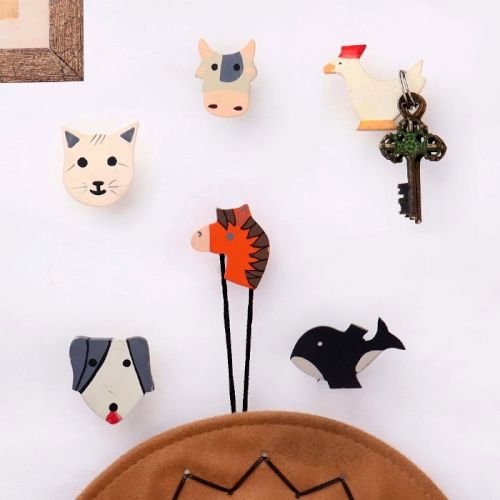-
Pichwai Painting Of Lord Krishna With Gopika peepal Trees Cows and Peacock On Fabric
- ₹ 33,600.00
- 1 In Stock
General Understanding of Radha Krishna Paintings
Radha Krishna paintings embody the eternal essence of divine love, captured in hues and strokes that transcend time. They are not just visuals but poetic expressions of spiritual intimacy where form meets formlessness. Often found in temple frescoes, palace murals, and sacred manuscripts, these artworks are steeped in Bhakti rasa. Each portrayal merges symbolism with narrative, drawing from epics like the Bhagavata Purana and folk traditions. The aesthetic leans towards idealized beauty with elongated eyes, lyrical postures, lotus-laden surroundings all anchored in a sanctified ambience. These paintings do not merely depict a mythological romance but translate metaphysical devotion into visible form, celebrating an eternal union beyond physical realms.
What Emotions Or Themes Do Radha Krishna Paintings Commonly Portray?
Radha Krishna paintings commonly portray a spectrum of transcendental emotions such as divine love, spiritual longing, playful mischief, separation, and eternal union. The central theme revolves around Prem Bhakti, an intense devotion that transcends human attachment. Radha’s yearning in viraha rasa, the sentiment of separation, and Krishna’s flirtatious charm in shringara rasa, romantic love, form the core narrative loop. Each painting becomes a still rhythm evoking leelas from Vrindavan such as the flute calls, the raas dance, the hidden glances. The gestures, color palettes, and ornamentation are all orchestrated to enhance the bhava and rasa, inviting viewers into a meditative space. The recurring moonlit forest backdrops, lotuses, and cows are more than motifs as they symbolize purity, spiritual harmony, and divine play. These paintings often mirror the inner spiritual journey of surrender, making them not merely decorative but deeply contemplative.
What Are The Most Recognized Styles In Radha Krishna Artwork (e.g., Pichwai, Miniature, Madhubani)?
Radha Krishna paintings span several celebrated traditional styles each carrying its own visual vocabulary and cultural syntax. Pichwai, rooted in Nathdwara tradition, uses textile as canvas and focuses on the Shrinathji form of Krishna often surrounded by Radha and gopis in symmetrical compositions. Its heavy use of gold leaf, floral borders, and symbolic props creates a sense of grandeur. The Miniature style especially from the Kangra and Kishangarh schools focuses on fluidity and emotional nuance with soft colors, romantic scenery, and lyrical posture work. Madhubani, a folk tradition from Bihar, presents Radha Krishna in a two-dimensional space using bold lines, flat colors, and intricate patterns emphasizing symbolism over realism. Each style brings distinct textures such as Pichwai’s opulence, Miniature’s subtle grace, and Madhubani’s earthy spirit. Collectively they offer a multifaceted view of the Radha Krishna lore adapting regional aesthetics into universal devotion.
Why Are Radha Krishna Paintings Still Revered In The Contemporary Art World?
Radha Krishna paintings continue to hold a sacred and timeless relevance in today’s art world because they balance devotional intensity with aesthetic sophistication. In an age of abstraction and conceptual detachment these paintings root art in emotion, myth, and storytelling. Contemporary collectors and curators admire them not just for their historical significance but also for the sensory depth they carry through ornamented layers, symbolic color schemes, and narrative density. These works invite introspection as they are visual mantras echoing themes of unconditional love, longing, and union. Additionally the stylistic adaptability from traditional scrolls to modern reinterpretations in digital and mixed media keeps them fresh and accessible. Whether placed in spiritual corners or elite galleries they evoke a response that goes beyond visual admiration into spiritual resonance. Their persistent presence signifies that while styles may evolve the human thirst for transcendence as embodied by Radha Krishna remains unshaken.
Techniques, Mediums & Artistic Tools for Radha Krishna Paintings
Traditional Radha Krishna paintings are a vivid tapestry of devotion, symbolism, and stylistic finesse. These works often embody a synthesis of miniature art techniques and temple mural styles. Artists would begin with intricate charcoal outlines, later filling them with rich color palettes sourced from crushed minerals, plant extracts, or stone powders. The brushwork maintained a lyrical flow, capturing Krishna’s playful expressions and Radha’s subtle gestures. The layering was intentional, allowing light to seep through translucent washes. Ornamentation often followed last, using fine squirrel hair brushes to render jewellery, flute, peacock feathers, and divine halos with precision. What makes these paintings timeless is the rhythm between visual devotion and technical grace where every motif echoes sacred storytelling through disciplined craftsmanship.
How Were Traditional Radha Krishna Paintings Created?
Traditional Radha Krishna paintings were created through a deliberate and devotional process where the spiritual met the technical. Artists began with preparing the base surface usually with a layer of natural chalk or clay mixed with an organic binder. Using a charcoal stick or fine brush outlines were rendered with quiet precision emphasizing balance in posture and symmetry in ornamentation. The pigments used were natural extracted from crushed semi-precious stones cow urine treated indigo neem leaves or dried flowers. Color application followed a sequence beginning with the background then flesh tones and lastly the intricate costume detailing. Gold leaf or powdered silver was applied with gum Arabic in highlights breathing divine luminescence into crowns and ornaments. The painting was often completed with burnishing to seal and smoothen the surface. Every stage echoed devotion with the artist working in meditative silence treating the act not just as craftsmanship but as a form of spiritual offering.
What Painting Mediums Were Commonly Used In Traditional Radha Krishna Art?
The mediums used in Radha Krishna paintings were deeply rooted in the traditions of Indian miniature and devotional art marrying the sacred with the sustainable. Natural pigments were dominant created from locally sourced minerals like lapis lazuli for blue cinnabar for red and turmeric or orpiment for yellows. These were ground and mixed with organic binders such as tree resins or animal glues. Gold leaf was not merely decorative but symbolic used to elevate Krishna’s crown or Radha’s ornaments reflecting divine aura. Shell white derived from crushed seashells was often employed for the eyes and subtle highlights. The use of natural brushes usually made from squirrel or mongoose hair allowed artists to capture intricate details like the curve of a peacock feather or the folds of Radha’s ghagra. These mediums were not just tools they were sacred ingredients in visual storytelling chosen for their permanence vibrancy and ability to preserve emotion on surface.
What Role Did Surfaces Like Cloth Paper Or Wood Play In Radha Krishna Paintings?
The surface chosen for Radha Krishna paintings dictated not only the visual outcome but also the emotional resonance of the artwork. Handmade paper treated with a starch or clay base allowed for detailed work and smoother layering of pigments ideal for miniature styles found in Pahari or Kishangarh schools. Cloth especially cotton or silk was stretched and coated with organic primers to enhance pigment absorption and was preferred for scrolls or temple banners. Wood panels were used for mural styled renderings particularly in South Indian traditions where durability was essential for sacred interiors. Each surface had its own breath reacting differently to touch color and brush pressure. Artists often selected the material based on the intended setting of the painting home shrines temples or royal courts. These surfaces were not passive backdrops but interactive elements that responded to brush light and storytelling offering texture and permanence to divine love made visible.
Artistic Intent and Visual Storytelling of Radha Krishna Paintings
Radha Krishna paintings are not merely decorative works but visual scriptures that hum the essence of Bhakti through brush and pigment. Every fold of Radha’s attire, every curl in Krishna’s peacock feather, and each floral motif holds an intent beyond aesthetics. Artists do not just paint figures, they invoke rasa, translating spiritual ecstasy, longing, union, and cosmic play onto canvas. The compositions often follow a lyrical rhythm that captures Krishna’s leelas and Radha’s emotional gravity. The storytelling rests in subtleties, a sideways glance, the flute placed gently against lips, a lotus blooming underfoot. These works become a silent sonnet of divine love, encapsulating time, myth, and devotion in visual harmony.
What Stories Or Messages Do Radha Krishna Paintings Aim To Convey?
Radha Krishna paintings aim to convey the divine interplay of human longing and cosmic union. These narratives do not stay bound within the confines of mythological episodes, rather, they unravel the multilayered bond of Radha and Krishna, symbolizing the eternal dance between the soul and the supreme. Some artworks narrate the Raasa Leela in Vrindavan, echoing movement and circularity through spatial patterns. Others depict moments of stillness, Radha waiting, Krishna leaving, filled with emotional silence. The storytelling often transcends verbal language. It moves through color gradients, spatial distance between figures, positioning of limbs, and the direction of Radha’s gaze. Symbolism is ever-present, the moonlit Yamuna, flowering creepers, gopis in rhythm. At its core, these paintings speak of transcendence through love and surrender, urging the viewer to dissolve personal ego and merge into devotion.
How Do Artists Express Devotional Mythological Or Cultural Symbols Through Radha Krishna Art?
Artists weave devotion into Radha Krishna art by embedding iconographic symbols, layered mythologies, and deep-rooted cultural aesthetics into every visual element. Krishna’s flute adorned with golden highlights becomes an emblem of divine call. Radha’s anklets shimmer not just with silver but with the longing of centuries. The banyan trees, the parrots whispering above, the blue lotus under Krishna’s foot, these are not decorative choices, they are visual metaphors from Puranic literature. The detailing of attire often reflects the textiles of the region where the art was created, Pichwai from Nathdwara, Kishangarh miniatures from Rajasthan, or Bengal school interpretations. Even the tilak, the jaali windows, the temple bells suspended in the margins of the canvas, everything breathes of lived devotion and cultural memory. The brush becomes a devotee’s hand. The canvas becomes a sanctum. These artworks are not made, they are offered.
How Do Light Shadow And Color Palettes Influence The Mood In Radha Krishna Paintings?
The interplay of light and shadow in Radha Krishna paintings does more than create depth, it builds emotion. Artists use chiaroscuro subtly to suggest mystery, yearning, or divine radiance. A glow around Krishna’s face might signify his avataric essence, while Radha in softer hues reflects inner longing or surrender. The choice of color palette is deeply symbolic, indigo and gold speak of royalty and spirituality, whereas soft pinks and forest greens evoke romance under moonlight. Shadow is not absence but invitation, a pause, a breath, a waiting heart. Artists layer washes of transparent color to create a dreamlike haze that blurs myth and memory. Monochrome backdrops with bursts of red sindoor or golden borders heighten visual focus and emotional tension. These choices do not merely build atmosphere. They shape the bhava. They make the viewer feel what the characters feel. Light becomes a blessing. Color becomes a language.
Purchase, Collection & Investment of Radha Krishna Paintings
Radha Krishna paintings are more than just depictions of divine love. They are sacred motifs preserved through brushstrokes, pigment, and devotion. Collectors often seek these paintings for their ethereal balance of colour, composition, and cultural resonance. The pairing of Krishna’s peacock feathered crown and Radha’s graceful poise becomes a timeless tableau of romance and divinity. Whether hand-painted on cloth, paper, or canvas, these artworks reflect a lineage of schools like Nathdwara or Kishangarh, each with a distinct palette and emotional register. A seasoned collector treasures not just the physical painting but the layered story it holds within its delicate pigment and frame.
Where Can You Buy Authentic Radha Krishna Paintings?
To acquire an authentic Radha Krishna painting one must seek IndianShelf, traditional art houses, reputable galleries, or heritage markets where miniature, Pichwai, and Mughal-inspired works are preserved. Cities like Udaipur and Vrindavan are known for their temple-affiliated artists who carry forward the Nathdwara and Bundi styles. Online platforms may also offer certified works but caution is essential. Look for signatures, provenance documents, and even consult art historians familiar with devotional art. Reproductions although widespread must be distinguished by their printing methods such as giclée prints on canvas versus mass-printed posters. For sacred art physical interaction with the piece, the layering, the hand-painted finish, the brush textures is irreplaceable and often lost in digital facsimiles.
How Can You Verify The Authenticity Of A Radha Krishna Artwork?
Authenticating a Radha Krishna painting involves close observation of the artistic grammar such as stylistic elements like Krishna’s posture, Radha’s gesture, the rhythmic backdrop of lotus ponds or temples, and the use of natural dyes or gold leaf. Genuine works especially from Nathdwara or Kishangarh schools show detailed iconography, brush finesse, and layered shading that suggests age and artistic lineage. Certificates of provenance, gallery documentation, or expert appraisal add to credibility. Artificial aging, pixelated detailing, or uniform brushwork often signal inauthenticity. Authenticity also rests in narrative depth as a real painting feels spiritually resonant, its bhava almost tangible, unlike mechanical copies. Trust the texture and temper of the strokes.
What Makes A Radha Krishna Painting A Worthwhile Investment?
Radha Krishna paintings carry both emotional and aesthetic capital. Their value appreciates not only due to age but also through iconographic rarity, regional style, and artist reputation. A Nathdwara piece from a lineage painter or a Kishangarh miniature reflecting poetic intimacy is often considered a timeless asset. These paintings encapsulate layered symbolism such as union, longing, transcendence which holds strong appeal in global art circles. As temple art enters curated galleries and private collections their value climbs especially if accompanied by documentation and well-preserved pigment. Investing in Radha Krishna art means engaging with a cultural continuum where devotion meets refined brushwork making each piece a timeless artefact of love and lore.
Care Framing & Preservation of Radha Krishna Paintings
Radha Krishna paintings are not merely visual poetry they are devotional heirlooms. Their care demands reverence. Dusting must be gentle using a soft-bristle brush or microfiber cloth to preserve brushstroke texture. Avoid exposing them to direct sunlight or fluctuating humidity as both degrade pigments and canvas fibers. Whether it is miniature on silk or oil on canvas every piece demands climate stability. Display them in spaces with moderate light away from kitchen fumes and bathroom dampness. When not in view wrap the artwork in acid-free paper and store flat ensuring no pressure bends the canvas. Divine aesthetics deserve mindful protection.
How Do You Properly Store And Maintain A Radha Krishna Painting?
To store and maintain a Radha Krishna painting begin by understanding its medium whether it is gouache on handmade paper oil on canvas or natural dye on cloth. Each requires its own climate protocol. Maintain a consistent environment between 18 to 22 degrees Celsius with relative humidity between 40 and 55 percent. Never store in plastic use acid-free tissue or unbuffered archival paper. If the work is on canvas store it vertically to avoid warping. Avoid contact with moisture light exposure and pests. Refrain from chemical cleaners. Opt for natural fiber gloves when handling. The surface should breathe never suffocate. If a painting is framed under glass ensure it is museum-quality with UV filtration. Whether stored or displayed the integrity of Radha Krishna’s divine imagery relies on clean surroundings and careful curation. Art especially sacred visual narratives survives through mindful ritual and constant attention.
What Frames And Materials Best Complement The Aesthetic Of Radha Krishna Art?
Radha Krishna paintings thrive in frames that echo their devotional ethos and artistic lineage. Traditional gold leaf wood frames lend opulence without overpowering the artwork especially for Tanjore or Rajasthani-style pieces. For Mughal-inspired compositions use dark walnut or teak with minimal polish to let the vibrancy of Krishna's peacock feather or Radha’s gossamer veil speak aloud. Mounting materials should always be acid-free. Float mounting enhances elegance for works on handmade paper. Avoid glare-heavy glass. Instead go for museum-grade acrylic or UV-protected non-reflective glass. Fillet borders in muted zari-inspired motifs can enhance spiritual resonance. Each frame should feel like an extension of the canvas an ornate silence that protects not distracts. Harmony between painting and frame ensures the rasa whether it is shringara or bhakti remains untouched unbroken. The frame is not just a boundary it is the threshold to another world.
Can Old Radha Krishna Paintings Be Restored Without Losing Their Original Feel?
Yes, old Radha Krishna paintings can be restored with great sensitivity to their spiritual and artistic integrity. Restoration should be undertaken by a professional conservator trained in traditional Indian painting techniques. The process begins with diagnosis identifying pigment fatigue canvas tears fungal growth or paper brittleness. Retouching must match the original pigment type natural dyes for miniature paintings or oil-based tones for canvas work. In-painting techniques like tratteggio or toning should never conceal but gently revive faded areas. The patina of time must remain over-restoration sterilizes history. Cleaning must respect varnish layers and not alter the original luminosity or sfumato. Re-lining if needed should use reversible adhesives. No synthetic quick fixes. The goal is to let the divine stillness breathe again not erase its age. With the right hands and heart restoration becomes a poetic revival not a mechanical repair. Every stroke must echo its origin not overwrite it.
What Are Common Damages These Paintings Suffer Over Time?
Radha Krishna paintings are susceptible to various forms of deterioration many rooted in neglect or environmental stress. Ultraviolet light bleaches natural dyes and cracks varnish especially in older oil or tempera works. Paper-based paintings suffer from foxing brown blotches caused by fungal spores. Insects like silverfish and termites can erode edges particularly in palm leaf manuscripts or cotton cloth backings. High humidity can warp canvases and weaken wooden stretchers. Improper framing often leads to acid burns from backing boards. Cracks flaking paint and surface abrasions result from poor handling or roll-storage. Over time varnishes yellow and obscure Krishna’s radiant blue or Radha’s delicate blush. Dust accumulation embeds within textured strokes dulling their luminosity. Understanding these vulnerabilities helps safeguard the rasa narrative depth and spiritual vibration these paintings offer. Protecting them is not just an act of preservation it is an act of devotion.
Home Decor, Styling & Mood Setting With Radha Krishna Paintings
Radha Krishna paintings, rich in lyrical brushwork and divine symbolism, act as visual ragas in any interior composition. Their sacred iconography weaves a mood of love, surrender, and sanctity, offering not just decoration but a narrative that flows into the walls. Whether detailed in Tanjore gold leaf, rendered in delicate miniature strokes, or imagined in expressive modern palettes, these paintings anchor a room's emotional core. They are not merely hung; they are invoked. In a world dominated by transient trends, Radha Krishna paintings gift timeless mood boards where romance meets divinity and the spiritual subtly converses with the aesthetic.
How Can Radha Krishna Paintings Influence A Room’s Ambience Or Tone?
Radha Krishna paintings inherently elevate the sensory and emotional tonality of a space. Their visual storytelling introduces an undercurrent of peace, harmony, and poetic intimacy. The use of traditional colors like peacock green, vermillion red, and midnight blue evokes spiritual moods rooted in bhakti rasa. When placed with intention across muted walls or alongside textured drapery, their composition can shift a room’s atmosphere from merely functional to deeply experiential. The expressions, the postures, the placement of lotus, flute, or cow—each motif acts as a subliminal cue, guiding the emotional resonance of the room. They soften modern angularity with mythic fluidity, turning corners into contemplative sanctuaries. In living rooms, they infuse hospitality with grace. In bedrooms, they summon quiet longing. And in meditative zones, they become the breath between silence. When framed thoughtfully and spotlighted subtly, they are no longer wall accents; they are mood architects.
What Interior Styles Pair Well With Radha Krishna Artwork?
Radha Krishna paintings possess a visual versatility that allows them to adapt across interior vocabularies without losing their soul. In traditional Indian homes, they rest naturally within carved wooden panels, brass elements, and earthy palettes. But they also dance effortlessly through eclectic bohemian settings, modern minimalist layouts, and even Art Deco spaces. A Mysore-style Radha Krishna piece can soften a Scandinavian room with warmth, while a bold, abstract reinterpretation can anchor a contemporary industrial loft with cultural cadence. Textural dialogue is key. Pair them with raw linens, jute, terracotta, or even velvet for added sensorial depth. The key lies in contrast and cohesion. The spiritual essence of the painting should either echo the room’s rhythm or consciously disrupt it for emphasis. From mandir corners to gallery-style hallways, they are art forms that negotiate memory and presence, ideal for both curated spaces and lived-in intimacy.
How Do You Choose The Right Radha Krishna Painting For A Living Room, Hallway, Or Temple Space?
The right Radha Krishna painting is not chosen; it is felt. For a living room, select a composition that resonates with the household’s spirit. A Rasleela with vibrant colors adds festive energy, while a serene Yamuna-side tableau brings calm. Consider size and spatial proportion. A large canvas with soft tonal balance suits expansive walls, while compact, framed miniatures work well within gallery clusters. For hallways, opt for vertical narratives or processional depictions to guide movement and flow. In temple spaces, authenticity reigns. Traditional techniques like Pichwai, Kishangarh, or Tanjore retain devotional integrity. Placement is ritualistic. The eye level should align with reverence, lighting should mimic sanctity. Observe details. The curve of Krishna’s fingers, Radha’s gaze, the presence of cows or kadamba trees. Each element adds a layer to your choice. Ultimately, the painting should not merely decorate. It must invite darshan, whispering silence between brushstroke and belief.
Cultural Impact & Historical Legacy of Radha Krishna Paintings
Radha Krishna paintings transcend aesthetics. They are chronicles of devotion, metaphysical love, and layered symbology that shaped the Indian visual tradition across centuries. Embedded deeply in the Bhakti movement, these artworks were not mere depictions but acts of worship and intimate visual meditations. Their presence in temples, palaces, and manuscripts contributed to spiritual literacy, allowing the viewer to access rasa, the emotive essence of divine love. The iconography of Radha and Krishna blurred boundaries between mortal and eternal, folk and classical, myth and memory. Across time, these paintings became visual scriptures and tangible embodiments of intangible longing. Their influence trickled into textile designs, miniature folios, temple murals, and even contemporary mixed media. Radha Krishna art is less a motif, more a living archive of cultural psyche. They captured what the poets wrote and the people believed in love as liberation, devotion as a dialogue, and divinity as deeply human.
What Is The Historical Significance Of Radha Krishna Art Across Indian Civilizations?
The historical significance of Radha Krishna art spans a layered cultural continuum from the Gupta period’s narrative stone reliefs to the lyrical brushwork of Pahari and Rajasthani miniatures. While Krishna appears early in Indian art history, it is in the post twelfth century Bhakti movement that Radha emerges as the aesthetic and emotional counterpoint. These paintings acted as visual texts that democratized access to the divine especially for the illiterate. They moved from temples to court ateliers, from palm leaf manuscripts to palace walls. The fusion of theology and eroticism, the balance of sanctity and sensuality, made them revolutionary. By the time of the Mughal influence, Radha Krishna themes adapted to Indo Persian aesthetics, enriching their visual vocabulary without losing their spiritual pulse. Each image preserved not only stories but moods including Shringara rasa, viraha, union, and longing. These paintings became cultural relics, codifying India’s theological diversity and regional storytelling into a shared devotional language.
How Did Different Indian Art Schools Contribute To Radha Krishna Painting Styles?
Indian painting schools interpreted Radha Krishna through distinct stylistic prisms, transforming shared mythologies into regionally rooted aesthetics. The Pahari school, particularly Kangra, bathed Radha Krishna in verdant romanticism, emphasizing emotional delicacy, foliage, and the lyricism of gesture. Mughal trained artists infused subtlety in facial expressions and textile detailing, blending naturalism with devotional themes. The Rajasthani school with its bold contours and vibrant palettes captured Raslila moments through a more symbolic and architectural lens, often placing divine romance within fortified palatial backdrops. In Odisha’s Pattachitra and Bengal’s Kalighat, folk fluidity met spiritual urgency, rendering Krishna as both playful and profound. Each school had its signature brushstroke, composition, and rasa orientation. Deccan miniatures infused with Persian undertones created intimate spatial narratives, reducing ornamentation but increasing philosophical intensity. Together, these schools formed an interconnected visual discourse where love became form, faith became color, and each region told the same story with a different soul.
Which Artists Or Regions Shaped The Evolution Of Radha Krishna Art Movements?
The evolution of Radha Krishna art was driven less by named individual artists and more by dynastic patronage and collective regional schools, yet certain ateliers and locales became historical powerhouses. The Kangra Valley under Raja Sansar Chand’s patronage fostered painters who transformed Radha Krishna into ethereal forms immersed in lush landscapes. Bundi and Kota with their distinctive chiaroscuro and dynamic movement added a sense of poetic tension to Raslila scenes. The Kishangarh school influenced by Bani Thani’s elongated features offered a surrealized Radha, iconic and almost divine in visual cadence. Meanwhile Vrindavan and Nathdwara became devotional centers where the art transcended aesthetics and became ritual objects. Pichwai paintings here were not just visual, they were votive. In the south Tanjore paintings adapted the Radha Krishna theme within a jewel encrusted gold leaf temple format, binding local aesthetics with pan Indian mythology. These regions did not just depict, they redefined how India envisioned and experienced divine intimacy on canvas.
Radha Krishna Paintings vs Other Art Forms
Radha Krishna paintings are not just visual expressions; they are deeply meditative gestures anchored in devotion and mythology. These artworks breathe with bhakti rasa, composed with lyrical brushwork, saturated tones, and symbolic iconography rooted in Indian epics. While other forms may chase concepts or design aesthetics, Radha Krishna canvases hold timeless stillness within motion through flute melodies, eye glances, and the subtle interplay of love and longing. Often framed within lotus motifs, peacocks, or forest groves, the composition flows with emotional cadence rather than structured abstraction. Each color and each line becomes a prayer, not just a stroke.
How Are Radha Krishna Paintings Different From Modern Abstract Or Minimalist Art?
Radha Krishna paintings stem from a spiritual tradition, merging narrative depth with decorative intricacy. Modern abstract or minimalist art, while valuable in exploring inner consciousness and geometry of perception, functions on form, negative space, and intellectual ambiguity. Radha Krishna compositions, in contrast, are expressive tales layered in spiritual iconography and rasa theory. They embody sacred love through physical posture, gaze alignment, and divine symbolism. Unlike minimalist art that isolates form or color, these works orchestrate every detail including the swirling ghagras, flute positions, and canopy of Kadamba trees to evoke spiritual resonance. They invite not interpretation but immersion. While abstract art leans into reduction, Radha Krishna art flourishes in expansion of story, devotion, and emotional scale. One deconstructs and the other reconstructs myth. One speaks in silences and the other sings in silence. Their language is different. One whispers in modernity and the other chants in eternity.
What Sets Radha Krishna Art Apart From Digital Prints Or Commercial Illustrations?
Radha Krishna art is born from centuries of oral storytelling and temple traditions where every brushstroke carries sanctity. Digital prints and commercial illustrations, though widespread, often lack the textured layering, pigment depth, and spiritual intentionality these traditional artworks embody. The tactile nature of handmade Radha Krishna paintings especially in Pichwai, Madhubani, or miniature styles engages natural dyes, handmade paper, and devotional practice, often painted in silence or accompanied by hymns. Commercial art relies on replication and mass production, flattening nuance for visual accessibility. Radha Krishna art celebrates sacred detail, not marketing appeal. It emphasizes darshan by invoking presence rather than presentation. Each element including the gentle curve of Radha’s eyes, Krishna’s peacock feather, or the sway of Vrindavan foliage is placed with philosophical awareness. While digital art captures style, Radha Krishna paintings capture essence. They are not decorative objects. They are meditative anchors that refuse to be hurried or hollowed.
How Do Traditional Radha Krishna Watercolors Differ From Oil-Based Interpretations?
Traditional Radha Krishna watercolors flow like soft mantras that are subtle, translucent, and ephemeral. They celebrate the delicacy of mood or bhava, relying on the movement of light across skin tones, fabrics, and emotional silhouettes. Watercolors allow Radha’s shyness or Krishna’s charm to emerge with gentle gradients and refined detail. These works lean into lyricism rather than volume. Oil-based interpretations, though rich in texture and dimensionality, often emphasize boldness and permanence. Oils capture gravity whereas watercolors capture grace. Oils demand layering and drying whereas watercolors demand restraint and timing. Where oils render myth with mass and solidity, watercolors let it breathe like memory. Water-based art is vulnerable and fleeting, like Radha’s glances or Krishna’s mischief as it invites you to pause and surrender. Traditional artists let water carry the pigment like the Yamuna carries Radha’s longing. Oils may glorify and watercolors sanctify. One sculpts myth and the other sings it.
Emotional & Symbolic Value of Radha Krishna Paintings
Radha Krishna paintings transcend the canvas, radiating a sense of eternal love, longing, and divine union. Each brushstroke speaks of Radha’s surrender and Krishna’s playfulness, blending bhakti with shringara in ways both personal and spiritual. These paintings are not mere visual experiences but inner journeys offering the beholder a moment to pause, reflect, and dissolve into rasa. Their composition often holds lyrical softness, flowing rhythm, and a dialogue of eyes that linger with unspoken poetry. As symbolic as they are emotional, these works represent the dualities of life joy and pain, devotion and desire, stillness and ecstasy brought into timeless harmony.
Can Radha Krishna Paintings Serve As Meaningful Gifts For Special Occasions?
Yes, Radha Krishna paintings make deeply meaningful gifts especially when offered on occasions like weddings, anniversaries, housewarmings, or spiritual milestones. They do not just decorate walls; they bless spaces. Gifting such a painting is akin to offering the idea of eternal love, divine protection, and spiritual growth. The emotional weight they carry is gentle yet profound unfolding intimacy, tenderness, and the wisdom of togetherness. When curated thoughtfully with motifs like the ras leela, veena-playing Radha, or Krishna under the kadamba tree, they evoke layers of cultural memory and devotional aesthetics. These paintings hold the potential to become heirlooms themselves tokens that speak over time of blessings, prayers, and the essence of sacred companionship shared from one hand to another.
What Emotional Value Do Inherited Or Family Radha Krishna Artworks Hold?
Inherited Radha Krishna paintings are often embedded with memory, devotion, and quiet reverence. They are not simply possessions but spiritual relics passed down with whispered stories, sacred rituals, and generational sentiment. The textures may be worn, the borders faded, but every crack tells of years spent watching over a family’s altar or welcoming guests in the drawing room with silent grace. Their emotional value lies in their continuity how a grandmother’s devotion transforms into a grandchild’s quiet faith. These pieces carry more than pigment and canvas; they are vessels of inherited belief systems, visual lullabies that once soothed, inspired, and guided. The intimacy they hold is private yet universal a silent observer to family prayers, festivals, and personal seeking. Their presence becomes ritualistic, comforting, and inseparable from the rhythms of domestic sanctity.
Why Do People Feel A Deep Spiritual Connection To Radha Krishna Depictions?
The spiritual pull of Radha Krishna paintings stems from their archetypal power and emotive serenity. Krishna the divine charmer and Radha the symbol of ultimate devotion mirror the seeker and the sought, the self and the soul. Their visual representation transcends literal form and is meditative in nature. The way they gaze at each other or lean into the music of longing creates an inner silence for the viewer. People don’t merely see these paintings they experience them. Each artwork becomes a shrine of sorts offering darshan, inviting surrender, and making the observer part of the eternal leela. The aesthetics such as peacock feathers, lotuses, and monsoon skies carry metaphorical weight and are rooted in rasa theory evoking shringara and bhakti simultaneously. In a fast-paced world, these paintings slow us down. They remind us of yearning, grace, and the unseen companionship between the material and the divine.
Frequently Asked Questions (FAQs)
What Defines A Painting As A Vintage Radha Krishna Artwork?
A Radha Krishna painting is considered vintage when it reflects the cultural, aesthetic, and devotional values rooted in a specific historical period, often pre-independence or mid-20th century India. These artworks carry not just visual markers but also emotional residues of time. The patina of age, the granularity of natural pigments, and the hand-prepared surfaces all contribute to this vintage character. The portrayal of divine love is rendered through elongated eyes, intricate jewellery, and mythologically aligned symbolism. Often executed on handmade paper or cloth with natural dyes, these works carry a certain fragility that cannot be replicated. The brushwork reveals devotional discipline rather than ornamental ambition. The iconography remains aligned to scriptures while the emotional palette invites the gaze to linger. A painting becomes vintage when it echoes the quiet reverence of its age, carries the weight of tradition in its composition, and possesses the texture of time worn with grace.
Can Radha Krishna Paintings Be Recreated Authentically Today?
Yes, but with limitations. Recreating Radha Krishna paintings in their authentic vintage form demands more than just replicating motifs. It requires a revival of lost techniques such as the preparation of mineral-based pigments, the use of squirrel-hair brushes, and surfaces like handmade wasli paper or treated silk. The artist must understand bhakti rasa, the devotional sentiment integral to these depictions. Authenticity also hinges on philosophical fidelity capturing not just Radha and Krishna’s forms but their spiritual essence, their lyrical chemistry, their cosmic rhythm. The challenge lies in resisting the urge to modernize or stylize them for mass appeal. Artists must study traditional schools like Nathdwara, Kishangarh, or Pahari to mirror the ethos correctly. True authenticity comes through surrender to the craft, the iconography, and the deeper spiritual connotation. While tools and resources may evolve, it is the painter’s intention and discipline that determines how faithfully these divine visuals can be reborn.
How Do You Protect Radha Krishna Art From Light And Moisture Damage?
Preserving Radha Krishna paintings, especially vintage or traditionally rendered ones, is a practice of reverence. Natural pigments are particularly vulnerable to both direct light and fluctuating humidity. To protect the artwork, use UV-filtered glass if framed and avoid placing it in direct sunlight or areas with artificial glare. Display in a room with consistent low ambient light supports pigment longevity. Moisture is a silent threat. Maintain indoor humidity between 40 to 55 percent and ensure the artwork is mounted away from walls prone to dampness. Archival-quality backing and acid-free mounting can prevent deterioration from behind. Avoid plastic wraps which can trap moisture. Regular visual inspection helps identify early signs of mold or pigment fading. For long-term storage, roll on acid-free paper and encase in a breathable container. True care lies in understanding the sacredness of the image and treating it with the same sanctity as one would preserve a relic.
Are Radha Krishna Paintings Still Relevant In Modern Art Scenes?
Absolutely. Radha Krishna paintings have not faded into historical decor. They have evolved into contemplative mirrors reflecting cultural identity, spiritual hunger, and aesthetic sophistication. In contemporary art scenes where fusion and reinvention dominate, these paintings continue to hold space not merely as decorative relics but as visual poetry. Their relevance lies in their ability to invite pause, contemplation, and emotional intimacy in a world that rushes forward. Artists and collectors find in them a rootedness that transcends trends. The themes of divine love, longing, surrender, and the feminine-masculine balance remain perennially resonant. Modern interpretations sometimes blend traditional imagery with abstract expressions, digital layering, or minimalist strokes yet the heart of the Radha Krishna narrative remains intact. Whether in a gallery in Mumbai or a curated art fair in Berlin, these works speak universally. Their devotional pulse, timeless symbolism, and compositional grace make them persistently significant across aesthetic and spiritual dialogues.
Can Traditional Radha Krishna Art Styles Be Used In Contemporary Painting Practices?
Yes, and they already are. Traditional Radha Krishna art styles offer a rich grammar ornamentation, posture, spatial composition, and color theory that can be recontextualized in contemporary practices. Artists today integrate miniature techniques, Mughal palettes, and mythological iconography into mixed media, digital collages, and even performance-based installations. What makes this dialogue compelling is the balance between preservation and innovation. A contemporary artist may retain the lyrical geometry of Kishangarh school while playing with negative space or monochrome fields. The layered symbolism of Radha and Krishna as representations of soul and divine becomes a powerful metaphor when placed in modern sociopolitical or emotional contexts. Importantly, incorporating traditional styles should not become aesthetic mimicry. The essence must translate not just the surface. Whether through brushstroke discipline, philosophical underpinning, or meditative detailing, traditional styles when consciously adapted deepen the narrative reach of modern art without losing their sacred root. They are not relics. They are evolving codes.
FAQ
A picture of Radha and Krishna, symbolizing the spiritual tie between two souls, is an excellent choice for a wedding ceremony to offer passionate wishes for a strong partnership.
In general, we hang artwork in our homes to give it a more lavish and holy vibe. Many individuals choose Ganesha paintings, Lord Krishna's paintings in the bedroom, and other types of paintings- since each has its significance. Since Radha and Krishna shared a special tie of eternal love and togetherness, Radha Krishna's paintings are very frequent in the bedroom. By producing a serene and loving aura, even a single Radha Krishna Painting can instill optimism in your actions and thoughts. When you're in love, you want to spend as much time as possible with your spouse in the most: peaceful and happy environment possible, and Radha Krishna paintings can help you achieve that goal! Paintings of other deities are not optimistic in the bedroom because they have no lasting effect on your personal life. However, Radha Krishna's paintings can strengthen your love for your companion. Even if you are single, having Radha Krishna's art in your bedroom will help you find a good life partner. Apart from the bedroom, Vastu experts recommend that you hang Krishna Radha paintings on the wall opposite the main room's entrance to keep tensions at bay.
Whatever we hang on our walls is for our eyes to see and our minds to absorb; it is there to help us relax and enjoy our lives. It is no longer a good idea to keep a dragon painting in your bedroom since it is unpleasant for both eyes and mind. Putting up enthusiastic and magnificent artworks of Radha Krishna, on the other hand, is supposed to raise your soul as well as spread religiosity.
Krishna's wreaths and flowers all over his neck, in addition to his blue and yellow clothing, be regarded as more than just a divinity. The colour blue represents the planet Earth, its lovely green nature, and the ocean's infinite depths. Yellow is a colour that conveys love and admiration for nature and what it represents to humanity. It also portrays fire and the soil (mud and silica), both of which have a mesmerising golden and brown colour to them.
It looks that hanging Radha Krishna paintings in your living room or bedroom is ideal. Because Radha and Lord Krishna are both incarnations of Goddess Lakshmi and Lord Vishnu, it is regarded as one of the best living room paintings and prosperous. Their unwavering love and determination for every other have enlightened humanity with respect to the authentic definition of love for millennia. As a result, hanging a painting of Radha Krishna's love in a couple's bedroom would be extremely- auspicious. Also, according to Vastu Shastra, hanging Krishna paintings in the bedroom increases the couple's love and heals any marital discords. It can also bring you an ideal and loving lifemate if you are an unmarried woman or men.


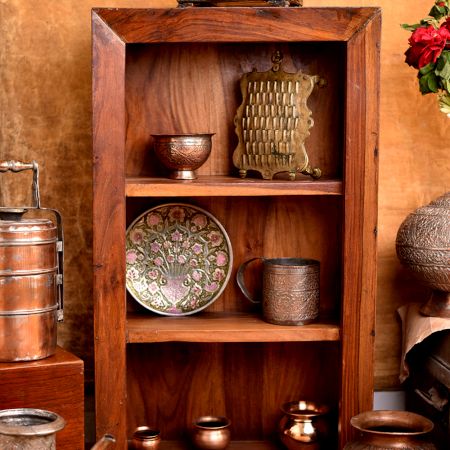
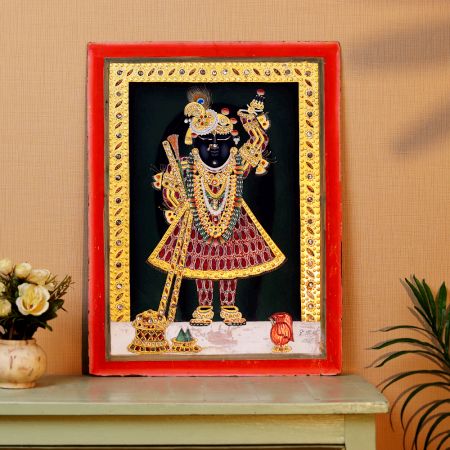
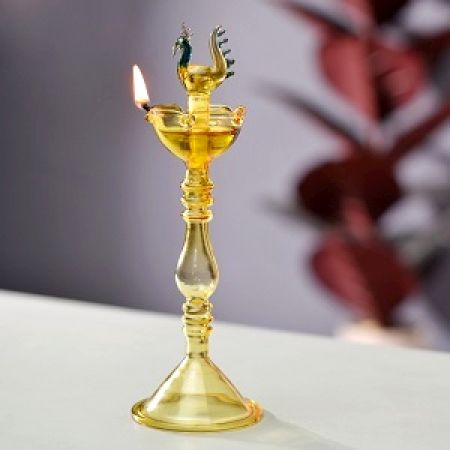
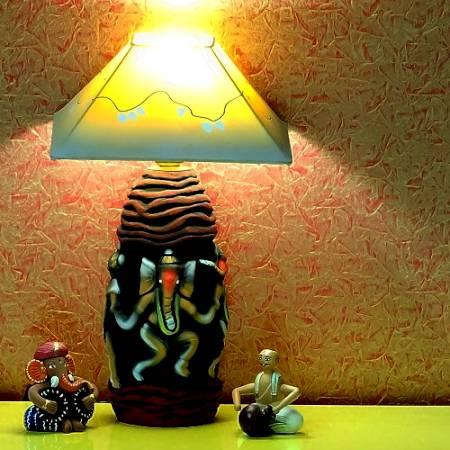
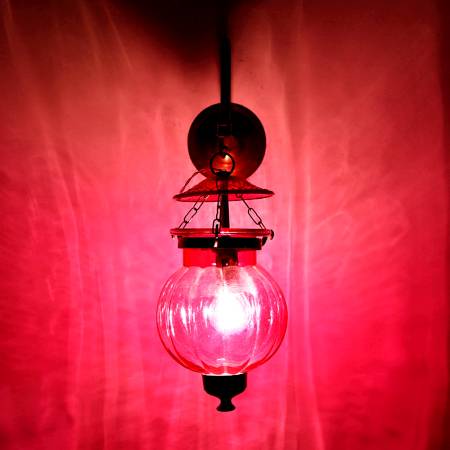

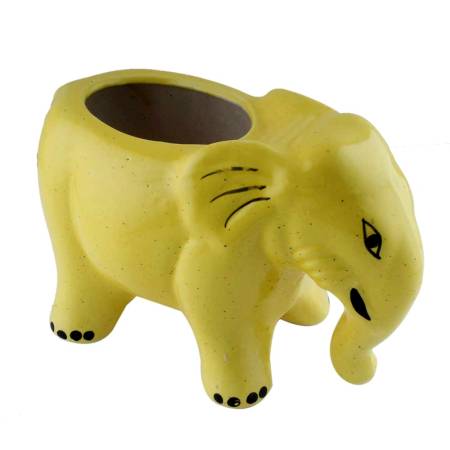
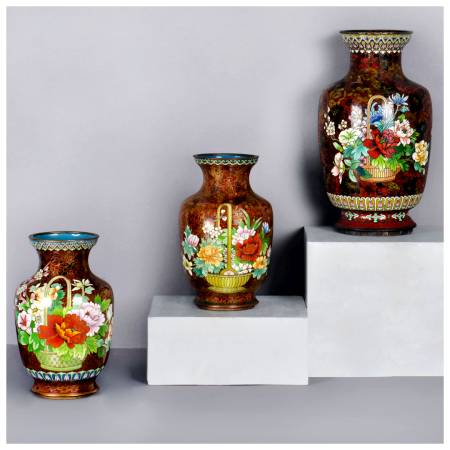
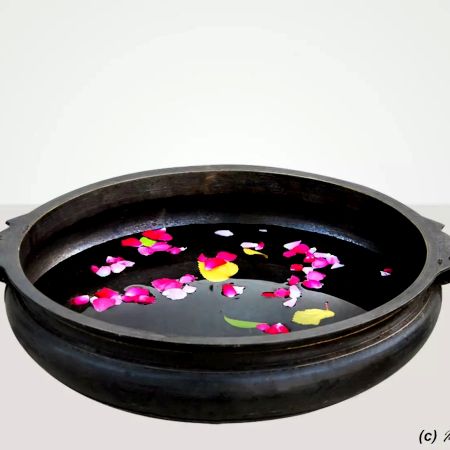

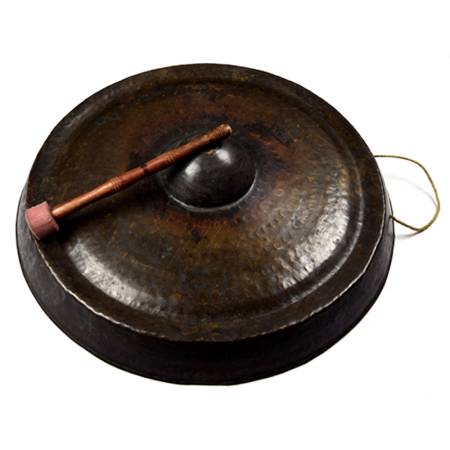




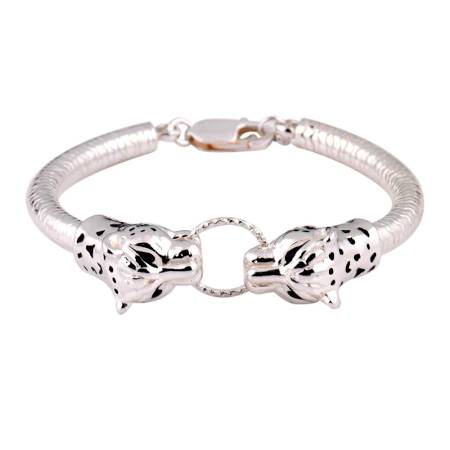
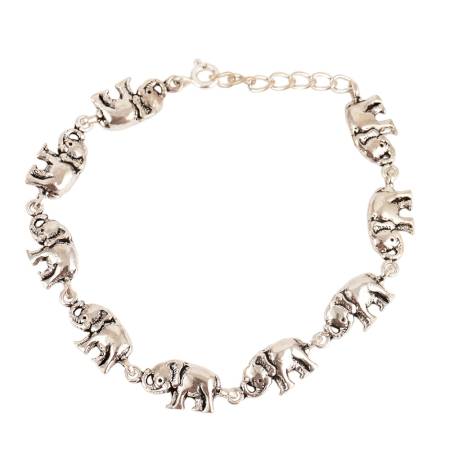

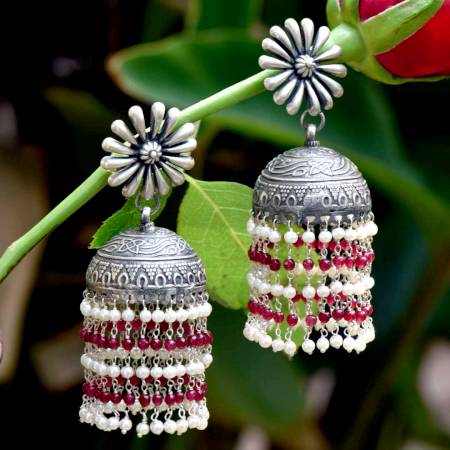
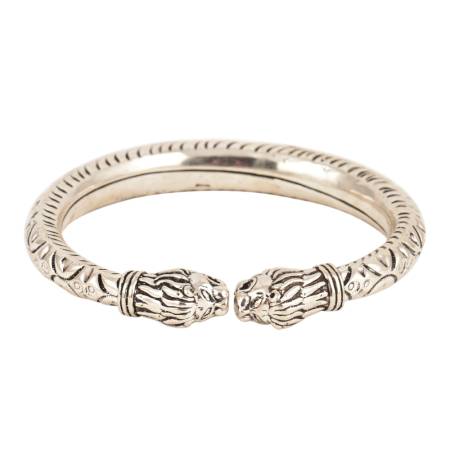
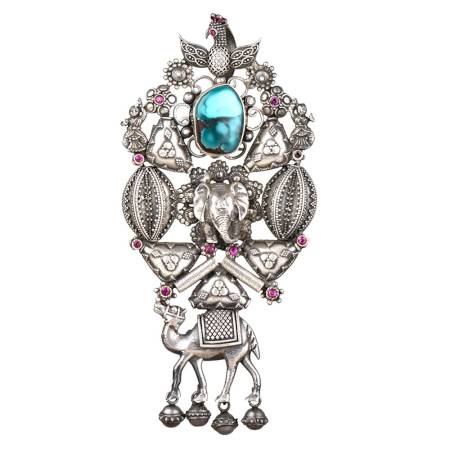
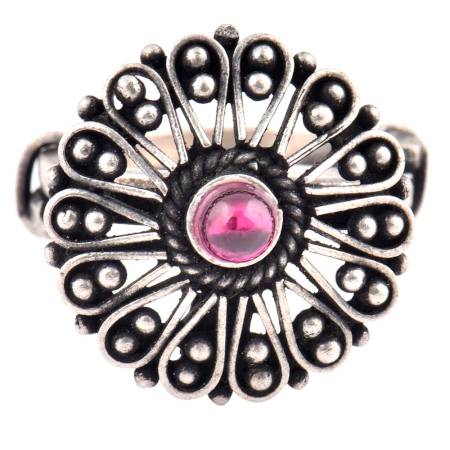
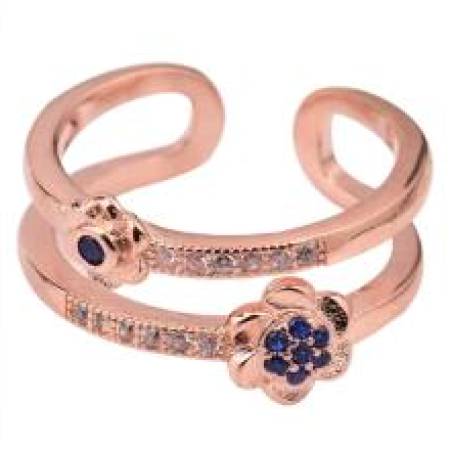
















































.JPG?ver=1.7)
.JPG?ver=1.7)
.JPG?ver=1.7)
.jpg?ver=1.7)






.JPG?ver=1.7)
.JPG?ver=1.7)






























.JPG?ver=1.7)
.JPG?ver=1.7)
.JPG?ver=1.7)
.JPG?ver=1.7)
.JPG?ver=1.7)
.JPG?ver=1.7)
.JPG?ver=1.7)
.JPG?ver=1.7)
.JPG?ver=1.7)
.JPG?ver=1.7)
.JPG?ver=1.7)
.JPG?ver=1.7)
.JPG?ver=1.7)
.JPG?ver=1.7)
.JPG?ver=1.7)
.JPG?ver=1.7)
.jpg?ver=1.7)
.jpg?ver=1.7)
.JPG?ver=1.7)
.JPG?ver=1.7)


.JPG?ver=1.7)
.jpg?ver=1.7)
.JPG?ver=1.7)
.JPG?ver=1.7)




.JPG?ver=1.7)
.JPG?ver=1.7)
.jpg?ver=1.7)

